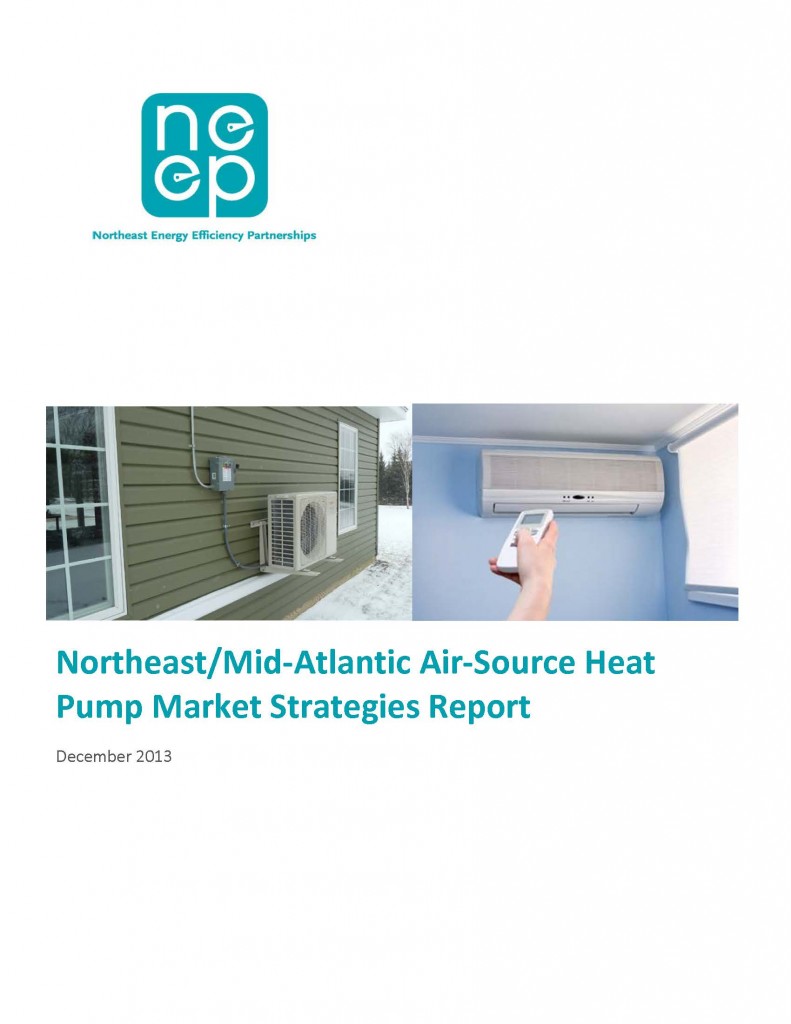By Samantha Bresler | Tue, January 7, 14
We all know what the outdoors can do to revitalize our health. We feel more connected, nourished, and energized after we venture out of our homes and take a deep, endless breath of fresh air, soak up vitamins from sunlight, or drop in on the crest of an interminable wave. What if I told you that the same raw nourishment from the outdoors can reduce your heating and cooling bill?
 The new ASHP report uncovers the potential of this emerging technology and identifies the barriers that stand against its widespread market adoption.
The new ASHP report uncovers the potential of this emerging technology and identifies the barriers that stand against its widespread market adoption.ASHP technology absorbs heat from the air and disperses it according to the heating/cooling needs of the tenant. Contemporary ASHP units can deliver one-and-a-half to three times more heat energy to a home than the electrical energy it consumes. In the Northeast and Mid-Atlantic, this promising return on investment can save roughly 3,000 kWh and $459 annually compared to electric baseboard heaters. Due to recent advances in heat pump technology, specifically under cold weather conditions, ASHPs have established themselves as a legitimate space heating alternative.
Yet despite the numerous positive qualities of the ASHP, there are still major market barriers for this emerging technology. The report identifies six critical barriers, and how we can overcome them:
6. Uncertain Policy Implications: A broad deployment of ASHPs will have impacts on the electric grid, use of delivered fuels, natural gas infrastructure, GHG emissions, and peak load. With a clear and appealing picture of those impacts, policy makers are more likely to provide strong support for ASHPs.
5. High Initial Cost: Although offering affordable products is key, according to the report, the payback period is roughly 8 years. Most states in the Northeast/Mid-Atlantic region offer lucrative incentives for ENERGY STAR Certified ASHP to help with the initial cost.
4. Poor Integration with Preexisting System: ASHPs are most often installed to displace existing heating systems rather than to replace them. It’s critical that occupants can operate the heating equipment in synchronization not competition.
3. Lack of Product Awareness: Consumers and contractors need to be aware of the technology, its savings potential, and its cold climate performance capabilities. This can be achieved with targeted educational initiatives.
2. Cold Temperature Concerns: Due to technological advances, regions with notorious winter conditions can now take advantage of energy efficient ASHPs. Identifying and promoting those products that performed at cold temperatures will improve acceptance.
1. Unpredictable Energy Consumption and Savings: To improve the expectations for ASHP performance, a variety of installed systems must be evaluated. This includes pre/post utility bill analyses and field metering studies.
NEEP has taken a crucial step in the publication of the ASHP Market Strategies Report, but we need the support of the whole region. We need to spread the word that transferring heat can be an attractive alternative to generating heat. Help us harness the energy of the air all around us and consider an ASHP for your home.